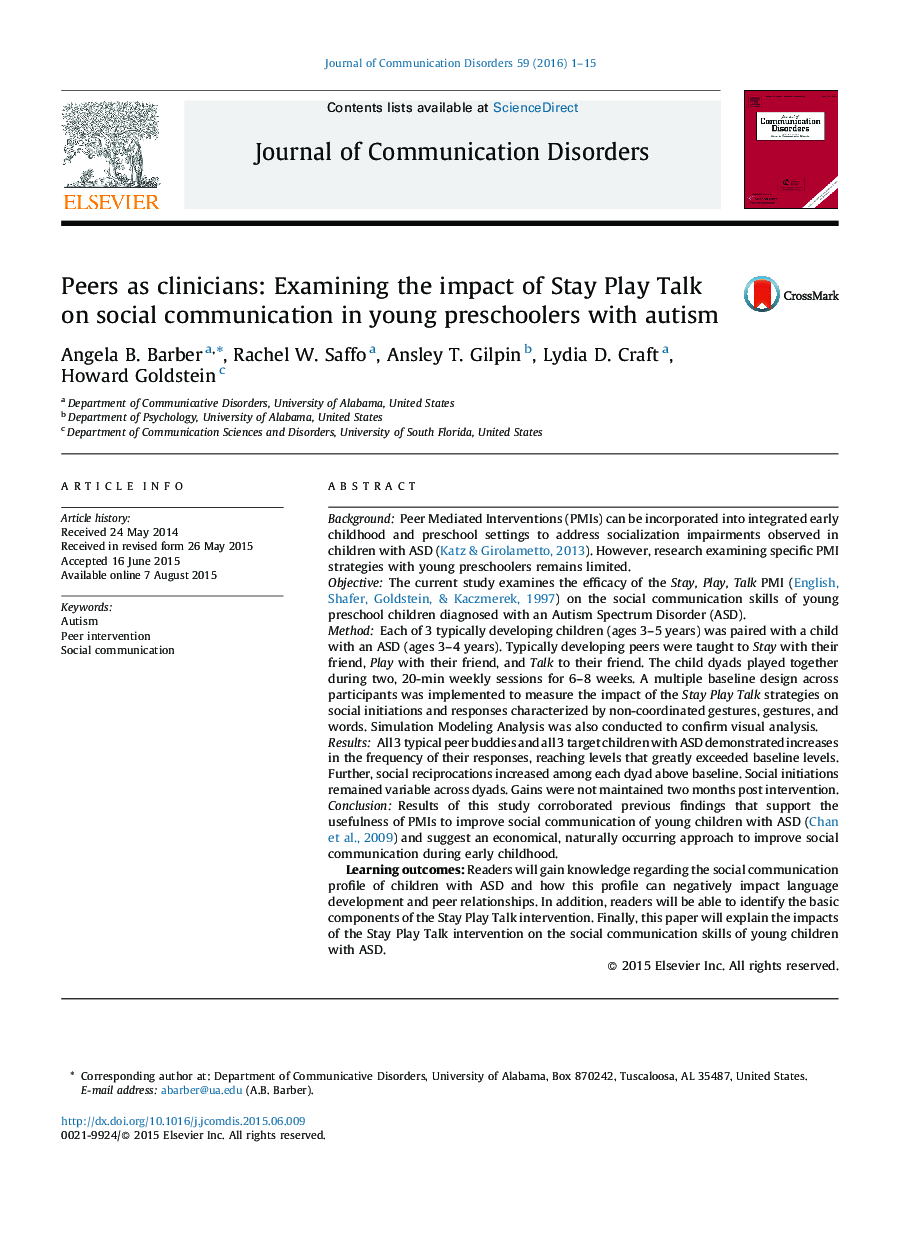| کد مقاله | کد نشریه | سال انتشار | مقاله انگلیسی | نسخه تمام متن |
|---|---|---|---|---|
| 910740 | 1473097 | 2016 | 15 صفحه PDF | دانلود رایگان |
• We measured the social communication produced by young preschoolers with ASD during a peer-mediated intervention called Stay Play Talk.
• Three typically developing peer buddies intervened with three children with ASD during 20-min sessions across 6–8 weeks.
• Initiations varied for children with ASD, but responses increased for all three children, exceeding baseline levels.
• Social interactions between children with ASD and peer buddies increased for all three dyads, exceeding baseline levels.
• Findings indicate that peer-mediated interventions may be an important supplement to an early intervention regimen.
BackgroundPeer Mediated Interventions (PMIs) can be incorporated into integrated early childhood and preschool settings to address socialization impairments observed in children with ASD (Katz & Girolametto, 2013). However, research examining specific PMI strategies with young preschoolers remains limited.ObjectiveThe current study examines the efficacy of the Stay, Play, Talk PMI ( English, Shafer, Goldstein, & Kaczmerek, 1997) on the social communication skills of young preschool children diagnosed with an Autism Spectrum Disorder (ASD).MethodEach of 3 typically developing children (ages 3–5 years) was paired with a child with an ASD (ages 3–4 years). Typically developing peers were taught to Stay with their friend, Play with their friend, and Talk to their friend. The child dyads played together during two, 20-min weekly sessions for 6–8 weeks. A multiple baseline design across participants was implemented to measure the impact of the Stay Play Talk strategies on social initiations and responses characterized by non-coordinated gestures, gestures, and words. Simulation Modeling Analysis was also conducted to confirm visual analysis.ResultsAll 3 typical peer buddies and all 3 target children with ASD demonstrated increases in the frequency of their responses, reaching levels that greatly exceeded baseline levels. Further, social reciprocations increased among each dyad above baseline. Social initiations remained variable across dyads. Gains were not maintained two months post intervention.ConclusionResults of this study corroborated previous findings that support the usefulness of PMIs to improve social communication of young children with ASD (Chan et al., 2009) and suggest an economical, naturally occurring approach to improve social communication during early childhood.Learning outcomes: Readers will gain knowledge regarding the social communication profile of children with ASD and how this profile can negatively impact language development and peer relationships. In addition, readers will be able to identify the basic components of the Stay Play Talk intervention. Finally, this paper will explain the impacts of the Stay Play Talk intervention on the social communication skills of young children with ASD.
Journal: Journal of Communication Disorders - Volume 59, January–February 2016, Pages 1–15
